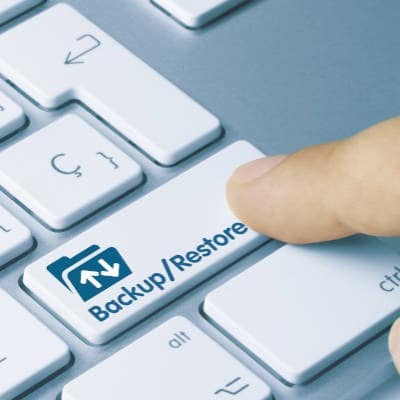What Are the Benefits of a Routine in the Workplace? Routines, processes, procedures, however you refer to them, can certainly provide a few boosts if set up correctly. They Encourage Consistent Results It is often said that the definition of insanity is doing the same thing over and over again and expecting a different result, whereas the definition of consistency (“conformity in the application of something”) is the practical application of the opposite. When it comes to the workplace, consistent results are the goal, so a consistent process makes sense. They Save Time As a process becomes more ingrained and develops into a pattern, it will inherently become more efficient to carry out. Resultantly, turning your responsibilities at work into a routine process will ultimately enable you to contribute greater productivity. They Make Things Easier and Less Stressful There is a reason that a routine can casually be referred to as a “groove”… they inherently simplify a given goal and put less pressure on the employee. This means that the employee in question can commit to the task at hand with a clear mind. All of these outcomes mutually benefit the employee that follows the routine pattern and the business’ overall success rates, so it makes sense to try and replicate these outcomes in your own business. To help you and your team out, we’ve assembled a quick guide to help you develop and establish beneficial routines to support your productivity. How to Build Up and Reinforce a Routine Here are a few suggested methods for you to put to use as you are building habitual workplace practices. Remember that the day starts before work does. The way that you wake up and conduct yourself before work begins can have a significant impact on how the rest of the day goes. Get to sleep early enough to make sure you get enough rest, and make sure you are waking up at the same time each day. Make your bed first thing–that little victory alone can help add a little positivity to the day. Mentally prepare yourself for the day’s agenda and arrange your priorities ahead of time. Doing these kinds of things each day will gradually turn them into the things you just do. Dictate how your time is spent at work. Once you are in the office, you need to continue shifting your mindset. Instead of thinking of your schedule as a list of your obligations for the day, look at it as an asset that helps you to accomplish your goals efficiently and effectively. For instance, many people are inclined to postpone their challenging or frustrating tasks, but try doing the opposite and finish them off first thing. Bundle similar processes together to make it easier to transition between them while maintaining your focus. Restrict the time you spend doing semi-productive things, like checking your emails and messages. Disconnect to fully prepare for the next day. After you’ve filled your workday with productive activities, it’s time to leave and reset for the next. Take some time to review what you accomplished, highlighting three of the most positive events, and then disengage from workplace concerns as much as you can. Spend some time with a personal hobby–not just relaxing, but actively engaging in something that commands your attention–to really […]
1. Managed Services Prevent Many Issues From Happening Here’s the big problem with IT solutions: most issues they experience will not only cost money to resolve, they prevent the business at large from being able to function to some degree. This makes the cost of these issues effectively double the price tag for any repairs. Furthermore, considering that the business is hemorrhaging income for as long as this functionality is impaired, there is generally a fee to resolve the issue charged by whoever comes in to fix it, with no guarantee that the issue won’t come back at some point in the future. In other words, better get out the checkbook. With managed services, your IT infrastructure is monitored to proactively detect issues, meaning that they can often be resolved remotely before they even materialize and have an impact. This eliminates the expensive downtime that would otherwise add to the damages of resolving the issue. 2. Managed Services Make Costs Predictable Speaking of the “damages of resolving the issue,” managed services operate differently than what one would expect, mainly due to their service-based approach. Through this approach, the managed service provider charges an inclusive, monthly fee based on the agreement they have with the business in question. Unless there is a need for something that goes outside the scope of the agreement, all services performed by the MSP are covered. This allows a business to more accurately budget for their IT expenses, rather than over- or under-allocating funds for them. 3. Managed Services Maintain Standards Most businesses are subject to at least one regulatory standard, whether it’s HIPAA, PCI-DSS, and/or any others. Managed services can help you ensure that your technology and its security protocols meet the requirements outlined in these standards, preventing you from being fined. Do Managed Services Sound Like the Right Choice for You So Far? Give SRS Networks a call to discuss them further! Our professionals are ready to chat and help you make the best decision for your needs. Call (831) 758-3636 today.
Decrease Your Power Spend This one is pretty basic: don’t leave things on if they don’t have to be. Turn off your lights and peripherals if you don’t need them at a given time. Keep Your Technology Up-to-Date Using updated technology offers a few benefits. Newer hardware is created to be more energy-efficient, so replacing these items provides benefits there. Cloud options, like Google Drive and Microsoft Office 365, allow you to scale back on the infrastructure you have in-house, decreasing your energy consumption and procurement costs. There are also benefits to cloud technology that will come back later, when we discuss the remote capabilities that they enable. Minimize Printing Newer solutions are also more collaborative, which means that most documents no longer need to be printed, which in turn decreases the paper your business goes through. Take Advantage of Remote Opportunities Cloud technology makes remote work much easier to facilitate. As a result, your employees cut back on the environmental impact of their transportation back and forth from work, as well as use less power in the office. Encourage Carpooling On those days that your employees need to be in the office, commuting in a shared vehicle can greatly reduce the aforementioned environmental impacts. This also gives your employees a great time to get to know one another as individuals, increasing their ability to collaborate. Switch Away from Disposable Items Consider the office break room. How many paper sugar packets, disposable filters, and styrofoam cups does your company go through in terms of coffee consumption alone? Phasing out these items in favor of reusable and refillable ones can decrease both your unnecessary waste and the amount you spend on break room amenities. Phase in Laptops Laptops are gradually becoming a wiser investment to make for most employees nowadays. With a few exceptions, these devices are perfectly capable of any work the average employee is responsible for. Furthermore, they make the remote work that we discussed before much easier to do, and use up less energy than a desktop workstation does. Recycle Your Old Technology This is a big one. As you upgrade your technology and other equipment, make sure you are properly taking care of the devices you get rid of. Computers contain materials that are extremely hazardous to the environment and therefore should not be tossed in the trash. Instead, after all data has been thoroughly wiped from them, you should take the steps necessary to ethically and responsibly recycle your devices. We can help with many of these efforts! Find out what we can do by calling (831) 758-3636, and make sure you subscribe to our blog!
One of the first considerations you need to make when you are installing a new wireless network is the hardware and software you are going to need to make it work. You’ll obviously need a modem, a router, and depending on how you need it to function, a network switch. Besides the cables that run from your modem to your other hardware, you won’t need any other hardware unless your space is too big, then you may need to purchase a Wi-Fi extender. Here are some of our most useful suggestions when trying to set up a comprehensive wireless network: Skip the consumer level – Like other types of hardware, there are different “grades” of networking equipment. For your business, you definitely want to purchase hardware that is of commercial or enterprise grade. This will ensure that you have the built-in security you will need when handling people’s sensitive information. Prioritize redundancy – Disasters happen, and you will want to make sure that your network is reliable enough to get back up and running. A data backup platform like our Backup and Disaster Recovery will work wonders to get you back up and running effectively. Plan for future growth – You will want to ensure that your wireless network can be scaled to support organizational growth or higher foot traffic, depending on your market. The IT professionals at SRS Networks are here to help you build your best business. Call us today at (831) 758-3636 to learn more about how to get the wireless network that is right for your business.
The Benefits of Working from Home There are benefits to working from home, even under normal circumstances, that employees undoubtedly appreciate. A big one is eliminating the commute. While those fortunate enough to live just a few minutes from the office may not see the significance, for most, the commute can be a terrible thing. In New York City, the average commute takes about 43 minutes, and rural areas of the United States see 30 percent of their workforce traveling 30 minutes each way to get to work. There are also the health benefits and decreased spending that can be seen, as employees are less inclined to snack and order out for their meals. Home also features fewer of the distractions that the office presents. In fact, despite the other distractions that the home can provide, a Stanford study conducted over two years demonstrates that working from home can greatly boost productivity. Finally, as an employer, you have to appreciate the decreased investment into space and utilities that remote strategies can bring if it were to become the norm. The Issues with Working From Home Unfortunately, there is no universal standard for what to expect when using a remote work strategy. Some employees just aren’t as productive doing work at home as they are doing work in the office, which gives many business owners and managers reasons to hold back on remote work privileges. It falls to the employees to gain the trust needed to convince the employer that remote capabilities are a good thing. There is a general acceptance of the idea that, if a person is at their desk at work, they are at least contributing something to the overall productivity of the group. Remote work’s benefits transcend simple company culture and can really impact a business’ functionality. Whether it is a matter of preference, or based on a need like the health concerns you are currently facing, everyone stands to gain when remote work is a viable option. How to Make the Most of Remote Capabilities As an Employee: Be on Time: While the eliminated commute makes the morning easier, make sure you spend the extra time you have doing what you need to do, whether that’s taking care of the family, eating a better breakfast than you otherwise could, or getting in a bit of reading or meditation. However you spend your extra time, just make sure you are in your seat and ready to work when you are supposed to be. Focus: Without the distractions of the office, focusing on your tasks should be somewhat easier. Try to accomplish as much as you can between breaks in your concentration. You will accomplish more, and the work will be better for it. Track Accurately: It is absolutely crucial that you accurately track how you are spending your time working from home. Take note of when you start and end your tasks, acknowledge when you reach certain milestones in your progress, and make sure you are communicating with the rest of your team to keep them up to speed. This accountability can also placate those who may distrust you are working diligently. Use the Right Equipment: Rather than going through the process of setting up an office phone in your house to deal with meetings you need […]
First of all, it’s important not to panic. Many organizations have been offering work-from-home perks for years. Not only is it entirely possible to keep business running, but many businesses see a boost in productivity. A two-year Stanford study shows that in general, remote workers are as productive, if not more so, than those confined to an office. Double Down on Good Communication Habits Although we’re all supposed to be social-distancing ourselves to prevent our friends and loved ones from spreading and catching COVID-19, communication is still incredibly important. Managers and supervisors need to be kept in the loop from both sides: team members need to report up to them, and company updates need to be communicated downstream. Regularly scheduled department meetings and staff meetings should still all happen. Department heads should check in with their teams regularly. Of course, business owners may get the intuition to check to make sure their staff is “on seat” and working, but if possible it’s better to show you trust your employees, and address problems with specific staff, have managers focus on them instead of the entire workforce as a whole. Fortunately, there are plenty of applications available to make communication easier. These range from instant messaging tools like Google Hangouts and Slack, to video conferencing solutions like Zoom, Webex, and GoToMeeting. For businesses that utilize Microsoft 365, Microsoft Teams is a solution included with each license. G-Suite users can use Google Hangouts for group chatting and internal conferencing. SRS Networks can help you set any of these up with your staff. One final thought: remember that many of your employees may be feeling pretty isolated, and even lonely. Keeping that structure with regular staff and department meetings can help keep people feeling connected. Staff can Make and Receive Work Calls from Home Beyond communicating internally, you’ll likely want your workforce managing the phones even from home. Fortunately, with many VoIP systems, this is relatively easy to do. Every VoIP solution is going to vary a little, but most offer the ability to make and receive business calls from any computer, laptop, or smartphone. It doesn’t require additional hardware (other than perhaps a good headset) and it gives your staff the ability to make calls from their work number instead of a personal one. They still get the same capabilities they would at the office: call recording, forwarding, voice mail, conferencing, and more. The key is they can handle it all from their personal device. Of course, traditional desktop phones and handsets are available too. On top of that, VoIP can often save a little money when compared to traditional phone systems. If your business isn’t using VoIP, it’s time to consider making the switch. IT Security is More Important Than Ever Let’s say you have 25 users and 25 workstations. You control those workstations; you have them monitored and maintained, and you have network policies pushed to them to prevent things from getting out of control. If those 25 users start working from home, suddenly you are contending with at least 25 endpoints that you don’t control. There are a lot of variables at play here. Who uses the computer at home? Are kids on it? Is it the family computer? What kind of security does it have? It’s impossible to say, […]
It makes sense that any kind of redundancy would be frowned upon, given that business operations today have become so focused on efficiency. The difference is that the redundancy that we are discussing here has an intended purpose. Let’s examine this intentional redundancy in action with the 3-2-1 Rule of data backup. The 3-2-1 Rule This “rule” is pretty generally accepted amongst IT professionals. It sums up to the following: 3. Three copies of your data should exist 2. Two of these copies are backups 1. One of these backup copies should be located offsite But why two backup copies? Wouldn’t one of them be mostly redundant? It would, and that’s the point. Consider the possibility that your on-site backup could be lost in the same disaster that destroys your original copy. Your backup isn’t going to be of any help then. What if you found out that your offsite data center suffered a disaster, and so your backup is gone, just as a minor data issue takes place in-house? Your second backup is just that, a backup to your backup. Plan C, when Plan B doesn’t work out. A Timely Message It isn’t hard to see why this kind of reliability is valuable to a business, considering what has been happening in the past few weeks with the COVID-19 outbreak. Businesses everywhere are either closing up shop or shifting to remote operations for the time being, and as this has been going on, business locations are being targeted. Theft and even vandalism can be very real causes of data loss, which means that properly backing up your data is a must. This situation also highlights one of the reasons that we really push the cloud as the best option for your backups. Not only is your data protected in the cloud, it is also accessible to your team, allowing them to work from home if need be until it is safe to return to normal working conditions. Of course, nobody should hope to have this happen, but not being prepared for it is just foolish. Again, we recommend the 3-2-1 Rule, as it practically guarantees that you aren’t without your data. If you need help setting up your backup solution, we can help with that, too. Call SRS Networks today to learn more about how working with us can ensure that your IT is reliably available to you when you need it. Reach out at (831) 758-3636.
What is BlueKeep? The Bluekeep vulnerability is a strain of malware that was discovered in May 2019, and was patched soon thereafter. Healthcare providers wanted to ensure that BlueKeep wasn’t anything like the EternalBlue situation just a short time ago. EternalBlue was the exploit hackers used that allowed the WannaCry ransomware attack to have such a lasting impact on the industry. Unfortunately, many health maintenance organizations didn’t apply the necessary patches; and with the three operating systems (Windows 7, Windows Server 2008, and Windows Server 2008 R2) that the BlueKeep vulnerability affects already lacking support, the situation is definitely problematic. This is more true today as the COVID-19 virus continues to spread rapidly, putting unprecedented pressure on these hospitals and other healthcare organizations. Even today, over 20 percent of all BlueKeep-vulnerable devices remain unpatched and nearly 45 percent of all connected medical devices remain vulnerable to attack. That includes some very important machines such as x-rays, anesthesia machines, and care-driven technologies vulnerable for an attack. Is your practice up-to-date? If you would like our professional IT experts to do a thorough assessment of all of your practice’s technology to see if your systems are patched and up-to-date, call us today at (831) 758-3636.
When it comes to the permissions that a business’ assorted users need to use inavigate ts network, most businesses turn to Microsoft Active Directory to help manage them. Simply put, Active Directory allows you to review and distribute access to the assorted resources found on your network and other user capabilities. However, whether you use Active Directory or another solution, the following practices and policies apply: Keep Permissions in Check One of the most crucial parts of your data security is the process of restricting access to your data (and your business as a whole) to only those who need it. For most businesses, there is no reason for anyone–especially a non-employee–to enter the premises in the middle of the night. Furthermore, different employees shouldnt have the same access as each other, simply because they have different access needs. Will one of your newly-hired employees need the same access as you do? Almost certainly not, so there is no reason to allow such a thing to ever take place. Make sure your network permissions are reviewed and corrected periodically. Establish Role-Based Permissions On the subject of restricting permissions, a utilitarian policy is generally best to follow. Will one of your users need access to a given resource in order to successfully do their job? If not, don’t give them that access. By assigning these permissions based on work roles, you can granularly give your team members the access they need, without unnecessarily exposing your data to individual employees who may not need a certain asset. Optimize and Supplement Password Policies A strong password policy is an absolute must when it comes to your data security. Not only do these passwords need to be strong, they should need to be updated frequently. This will help prevent users from sharing their passwords, or reusing old ones. Because there are so many passwords that everyone is expected to remember nowadays, the strength of these passwords has suffered. Combining this with the fact that cybercriminals now have stronger tools than ever to crack passwords, the username/password combination is often no longer sufficiently secure. To remedy this, implement two-factor authentication, which makes a cybercriminal’s job that much harder. Need help with these steps, or any other part of your business’ technology? We can help! Give SRS Networks a call at (831) 758-3636 to speak to one of our IT professionals!
First, let’s look at the concept of gamification a little more closely. What is Workplace Gamification? In a nutshell, gamification is the concept of taking elements of games (the parts that make them fun) and introducing them into business processes with the intention of boosting engagement and productivity. For instance, many applications and computer software exist today that appeal to young children with bright colors and animated characters guiding them along a storyline. However, these applications actually encourage them to learn by only allowing progress through their successful completion of activities based upon math or literature. As a result, learning is made “fun” by associating it with an enjoyable activity, which is a natural motivator. This source of motivation is just as effective among adults, and so it has been employed in more and more business applications. How Can the Workplace Be Gamified? Regardless of how long an employee has been at your company, their experience has the potential to be boosted in some way or another, largely thanks to how simple it can be to gamify a business process. For instance: Those in training can be introduced to assorted workplace requirements and procedures via gamified learning portals. Established employees can be incentivized by gamified rewards and recognition to accomplish more and abide by proper procedures. Ongoing training can be made far more efficient and less time-consuming through a gamified structure. Your employees can receive feedback and correction in real time, helping them to identify their mistakes and adjust their actions. Furthermore, the engagement that gamification can bring can be directed to the benefit of your employees and their overall well-being. Instead of gamifying their tasks during the day, some companies have elected to gamify their employees’ health and well-being. Sedentary jobs are notorious for their adverse effects upon health, so gamified challenges are used in conjunction with fitness trackers to try to promote employees to be active whenever possible. As healthier habits are established, absenteeism drops, as healthier employees are less likely to require sick days. Finally, and perhaps most obviously, gamification can be used as a team-building tool. A prime example is in the explosion of company-based eSports teams, where coworkers compete in a video game. This has worked both with individual employees pitted against one another or with coworkers playing alongside each other as a group against another group of players. While teamwork and communication are developed, the engagement this can bring to a workforce really shines… even more so when the organization of it is left to the employees, and not management. While we aren’t known for our involvement in the gaming industry, SRS Networks can help make your team’s time more productive in other ways! To learn about our IT solutions, give us a call at (831) 758-3636!










